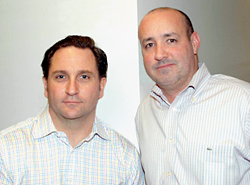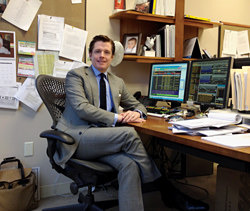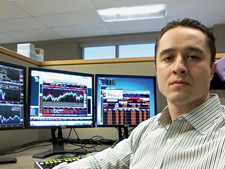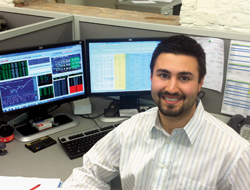Perennial questions seem to plague the buyside. For example, how important is good communication between stock pickers and the trading desk? What is the best way to trade small caps? How can a desk improve its trading process through analytics?

Whether trading the domestic or international markets, the job of the buyside is consistent: To find the most liquidity at the best price—a Herculean task, as that often means having to move blocks of stock with surgeon-like skill and not impact the markets.
Here are six condensed stories about buyside traders and their firms that should provide insights into how they approach trading. The stories should also shed some light on recent happenings on the desk. These highlights have been excerpted from Buyside Snapshots that ran earlier this year in Traders Magazine.
It’s takes more than luck and brains on the buyside. A disciplined approach, from stock selection all the way through execution, is a key factor to success, according to Enrico Cacciatore, a senior trader at ING Investment Management. At ING, portfolio managers trust traders to be a part of the portfolio process. Traders might sit on a small-cap block for days before acting, patiently waiting for the right opportunity in price and liquidity.

“There’s a close relationship with the portfolio managers who are deciding which names they like fundamentally,” Cacciatore said in February. “They let us know what names they’re interested in, buys and sells, and we’ll indicate to them event-driven news, price points where we see short to mid-term support and resistance and how much they can buy or sell based on liquidity, volatility, market impact and potential natural blocks.”
Brian Murray, a vice president and senior equity trader at ING, said good communication between traders and PMs leverages the skills of each and adds alpha. A large-cap manager might want to just send an order down and get it done, but small caps can require a bit more finesse.
“There’s certainly more interaction with the small-cap managers,” Murray said. “You may have orders on your blotter for an extended period of time and it is important to pick your spots and stick to your levels. If there is anything going on in their names, we always alert them and they are very receptive to any commentary and feedback.”
Many algos still aren’t suited for small-cap stocks, so traders have to find the ones that are. ING also has proprietary execution methods for sourcing stock, so it can source dark liquidity directly without using broker algos.
The story is similar at Heartland Advisors in Milwaukee. Eight-year veteran Josh Van Dreel is right in the thick of the investment process and “part of the conversation” with portfolio managers. Van Dreel, along with veteran traders Matt Miner and Kevin Clark, sits alongside the 14 managers and analysts at Heartland, which manages $5.2 billion in equities.
The setup is similar to how many hedge funds operate and the benefit is obvious for this long-only, small-cap manager: “We can hear them talking about ideas that they have, so we can gauge what names they might have an interest in,” Van Dreel said in March. “It makes us so much more efficient. We’re right in the middle of them.”

This open communication allows both traders and portfolio managers to better interact with each other and to react to liquidity opportunities presented by the Street. The traders can quickly respond to merchandise being shopped and complete a trade. That might have been less likely had the portfolio managers been stuck in an office elsewhere.
The desk favors its research brokers, which do about 84 percent of its commission business. But that doesn’t mean it won’t trade a large piece with a non-research broker if a relevant block is presented. The portfolios are concentrated, so block liquidity is important to this fundamental research house’s strategy. Third market firms like JonesTrading and Cantor Fitzgerald often fit the bill in these situations. At Heartland, research is important, but so is natural liquidity. “In the small-cap space, their order flow is every bit as valuable as research,” Van Dreel said.
Finding liquidity in the overseas markets presents its own challenges. At 2:30 a.m. each weekday, head trader Gordon Gary begins his workday from the privacy of his Philadelphia home. That’s when he checks on stocks in Europe, the ones he’ll be trading that day for Philadelphia International Advisors, which manages $4 billion in equities.
He’s in the office by 7 a.m. and has the luxury of dealing with 24 brokers that provide research and execution. Five of the firms are in New York, but the rest are in London. Gary cites the benefits of having relationships with traders that are familiar with the local markets and certain stocks.
“Establishing those relationships on the ground floor has been invaluable for us at times,” Gary told Traders Magazine in April. “It’s not just the sales traders who know who’s been active, but also the sector traders, too, who’ve been watching these stocks for years and know what’s going on outside of the general news flow.”
Gary spent three years trading Asia in real time and shifted his focus to Europe in 2007. In 2010, he was named head trader. After the close in Europe, Gary takes his trading hat off and works with portfolio managers and analysts. Other times, he finds that the marketing group needs his insights. His day ends about 4:30 p.m., but within the next hour, portfolio managers will begin sending orders to the desk before the market in Japan opens. The cycle for Gary begins again early the next morning.

Highstreet Asset Management‘s Rob Pulkys sees the world through a Canadian lens. Pulkys came into the business of trading right when Reg NMS got off the ground. He found himself learning to trade U.S. stocks in the new environment at the same time more experienced traders were having trouble adjusting to a different mindset.
Today, nothing surprises him. As the head trader at a firm with $4 billion in assets under management, Pulkys has learned to embrace change, not fear it. And sitting on his desk in London, Ontario, he certainly isn’t afraid of the dark. In fact, dark pools are his favored venues.
“In a perfect world, I would love to trade everything in the dark if I could,” Pulkys said in January. “But I realize that’s not the reality, especially in Canada.”
Highstreet trades both U.S. and Canadian securities. Pulkys said he executes about 10 to 25 percent of his flow offboard in Canada, and 30 percent of his U.S. flow is in dark pools.

While in the dark, he still looks for blocks, though they are harder to find in his small-cap universe. He employs liquidity-seeking algorithms to help locate natural blocks, but more often finds virtual blocks, which he’ll trade nonetheless.
“We are agnostic as a firm as to where the flow comes from,” Pulkys said. “I don’t care where the liquidity comes from so long as I can get it.”
Being a buyside trader sometimes takes time–not only to get a trade done but to get your program to evaluate best execution in order. That was the case for Mark Kuzminskas, director of trading at Robeco Investments, who just spent the last two years developing a new trade optimizing tool.
Kuzminskas told Traders Magazine in June that he has spent countless hours trying to increase his desk’s trading efficiency in today’s low-volume trading environment. That is of paramount concern given the firm has $25 billion in assets under management. This new execution optimization tool, which launched in April, is key to best execution, he said.
“The bottom line is, we are now pairing up historical PM trading profiles with real-time tick-by-tick data to optimize trade execution,” Kuzminskas said. By employing this technology, he added, some order flow can be automatically routed, freeing him and other traders to handle the more difficult orders.
The project marries data from portfolio managers’ trading history with real-time stock analytics for the desk. The goal of the project was to optimize trade scheduling based on the PM’s tendencies in order placement, using real-time analytics.
“Instead of using the brokers to route our algorithms, we’re using trade-cost analysis and market analytics to determine the routing ourselves, and access these markets at our discretion,” he said.

At RiverFront Investments, trading has little to do with algorithms. Most of the firm’s trading is done high-touch–about 85 percent, according to head trader Rob Glownia–with the balance done via algorithms. The high percentage of high-touch trading is attributable to the fact that his firm, which manages $3 billion in assets, uses exchange traded funds-ETFs—to provide clients with exposure to the markets in several asset classes, such as fixed income securities, commodities and currencies, as well as stocks.
Glownia said in May of this year that many of the ETFs his firm employs are less liquid than their underlying constituents. So instead of trading on the screens, the desk will either find a competitive risk market or trade over the day within the ETF basket to minimize trading costs.
RiverFront provides the indexes for two of Invesco’s ETFs, as well as partners with financial services firms and their advisors to offer separately managed accounts, unified managed accounts and sub-advised mutual funds.
“We don’t take any direct business from clients,” Glownia said. “Rather, all of our assets are sent to us by financial advisors on behalf of their clients. We want to be a solutions provider. We believe our managed offerings, coupled with our research and commentary, make us unique.”




